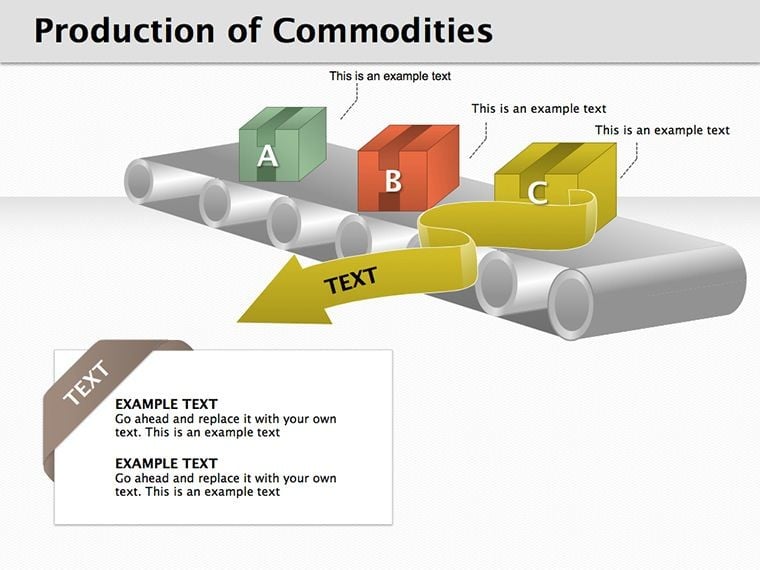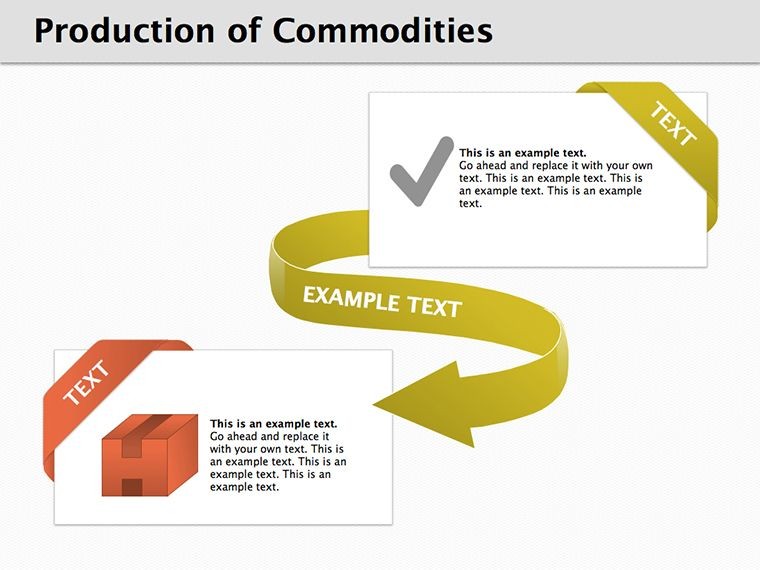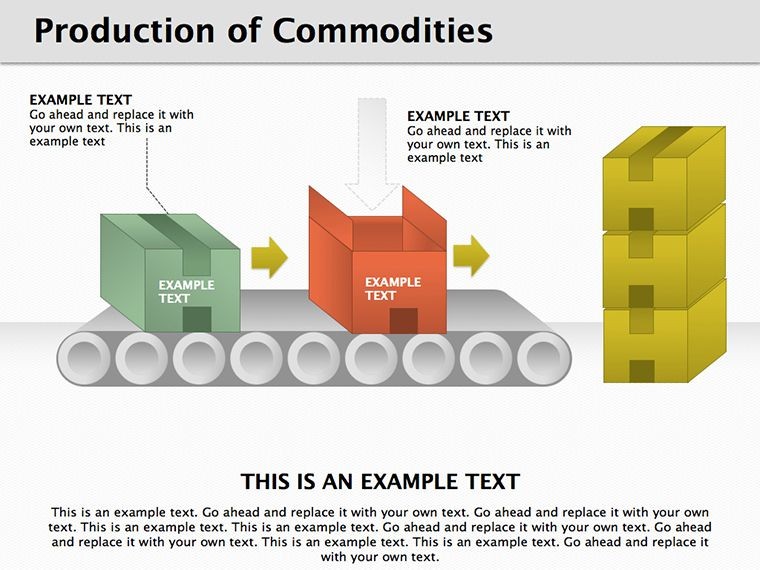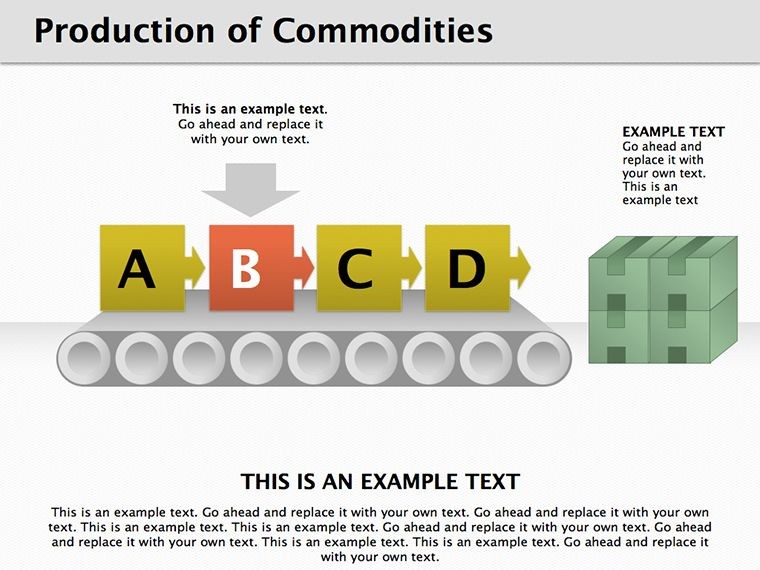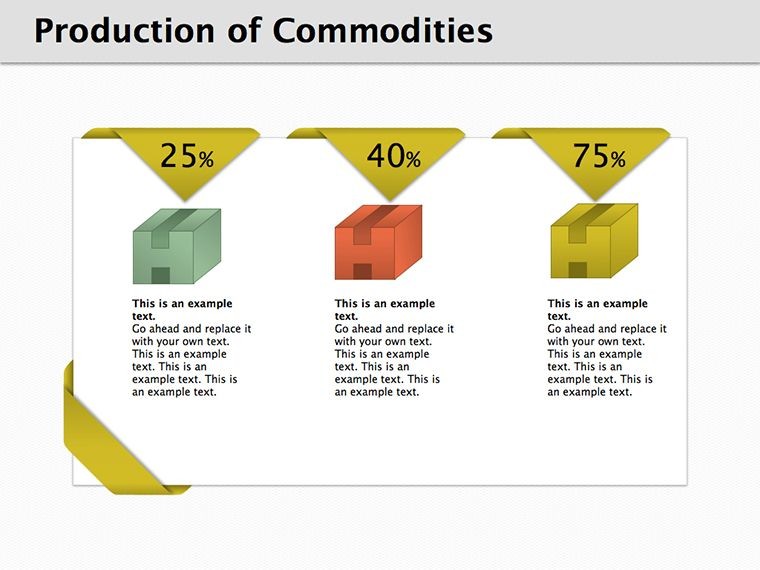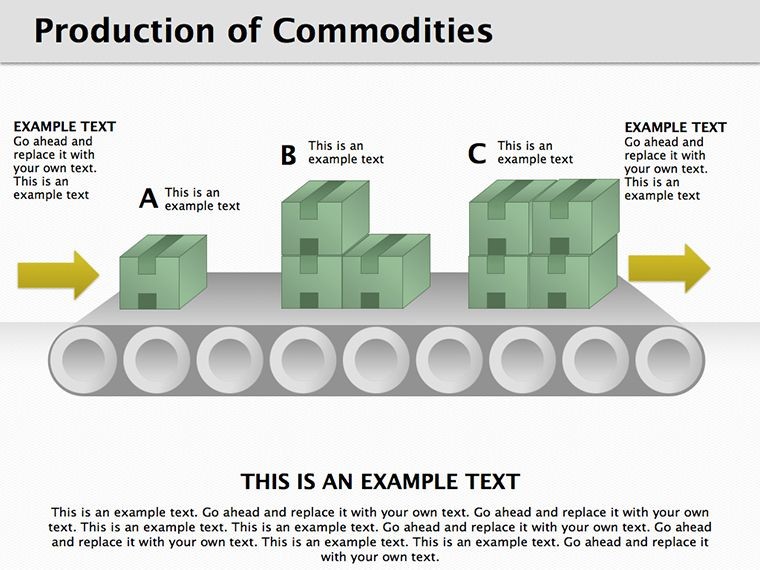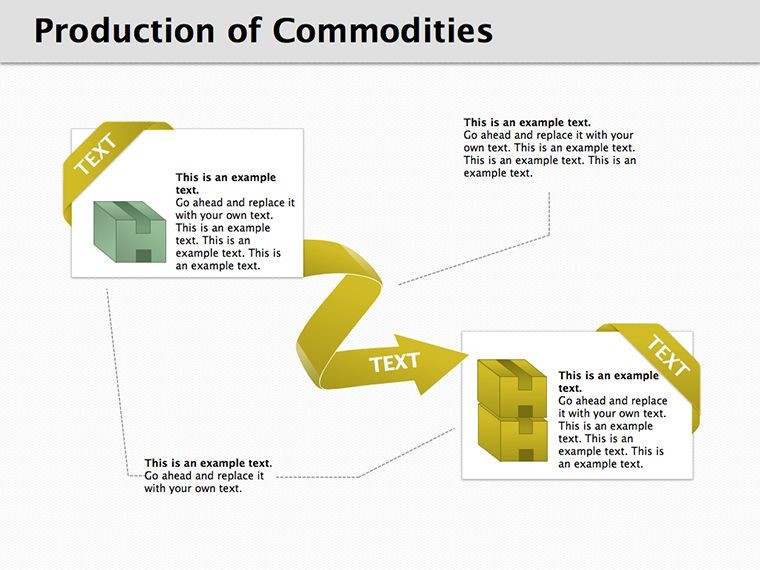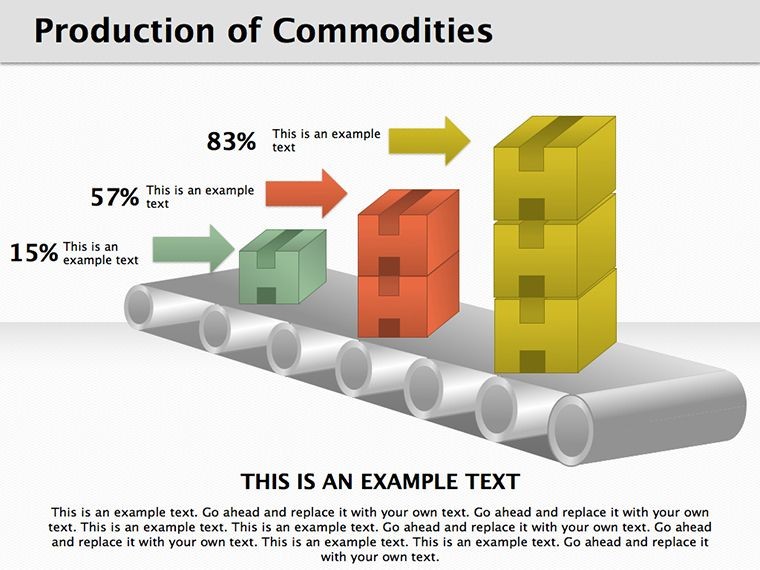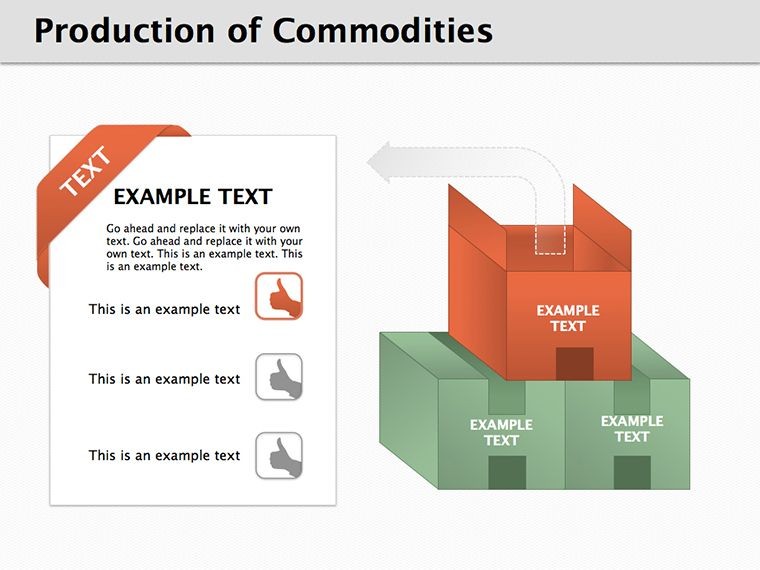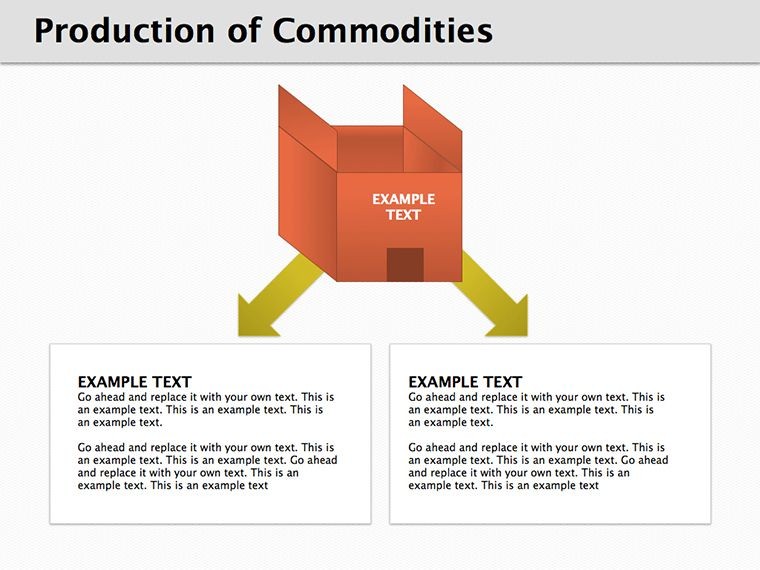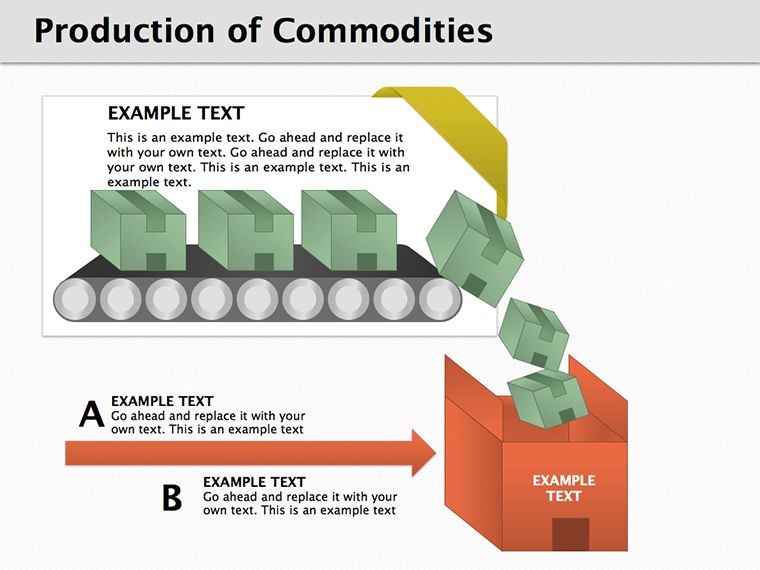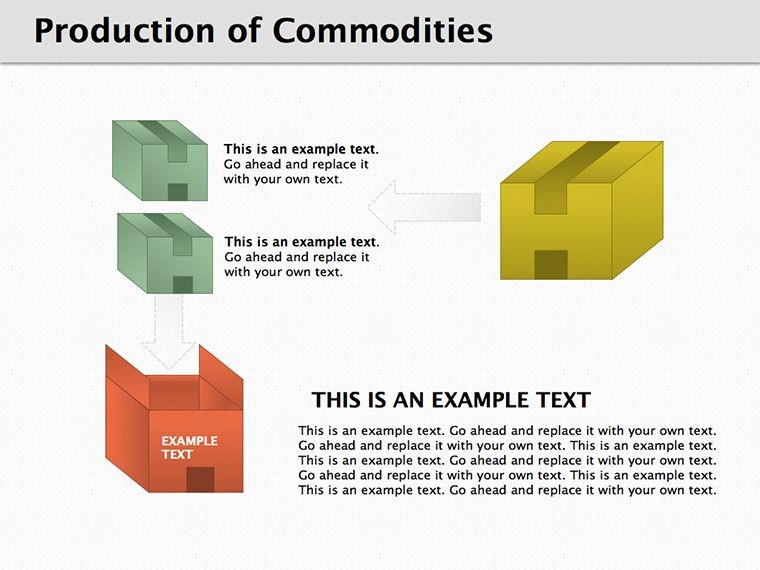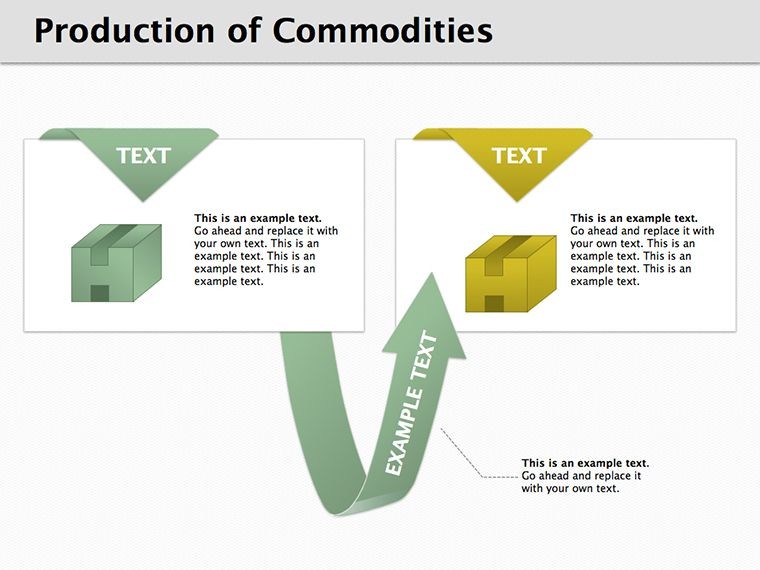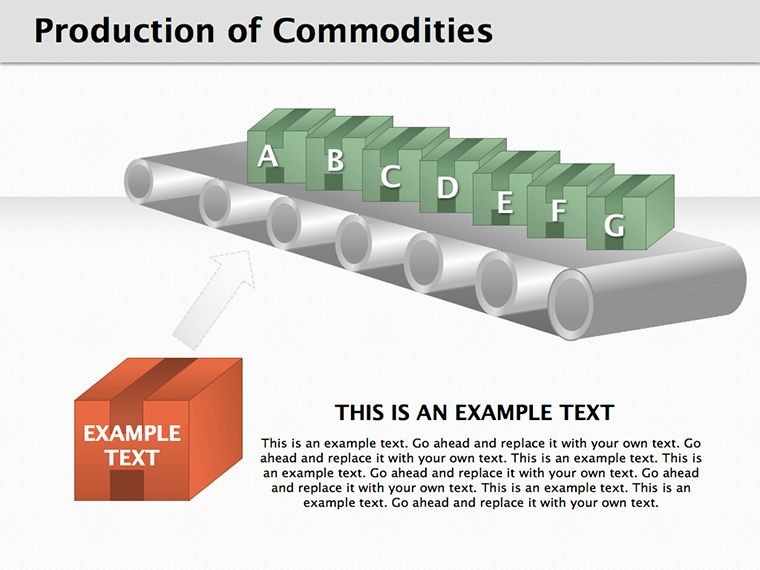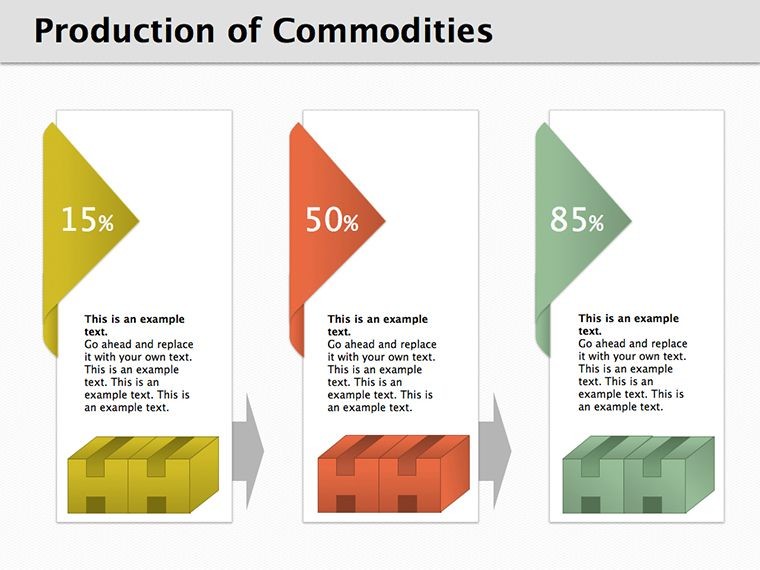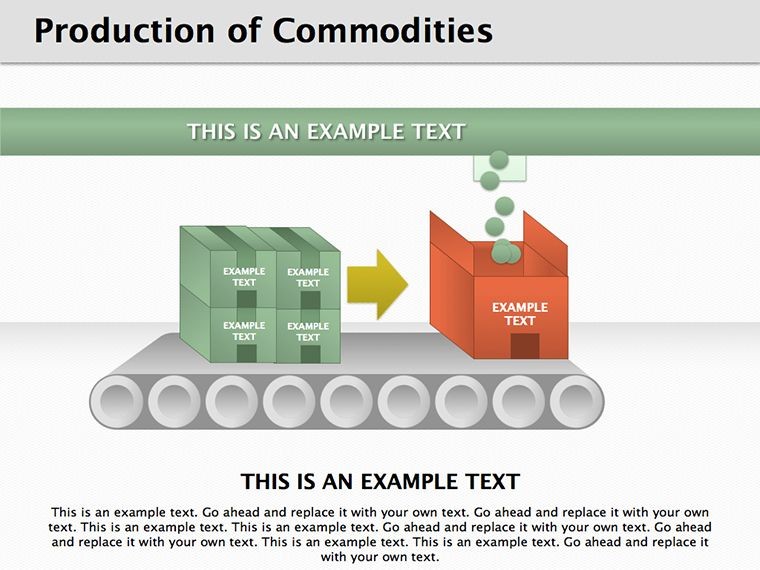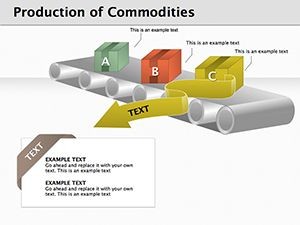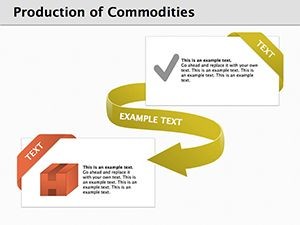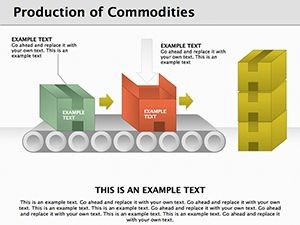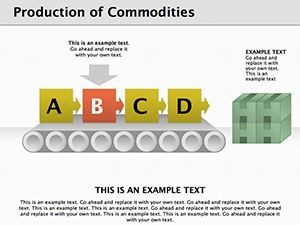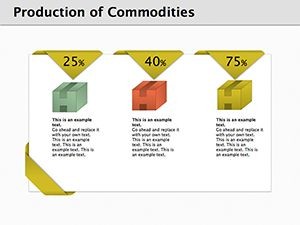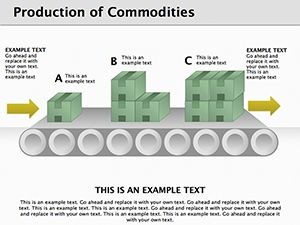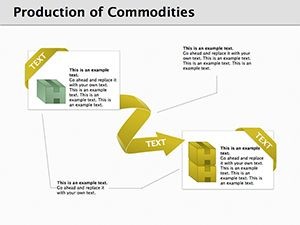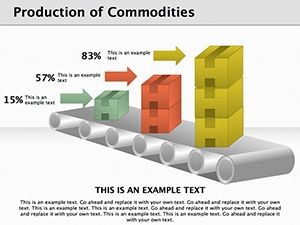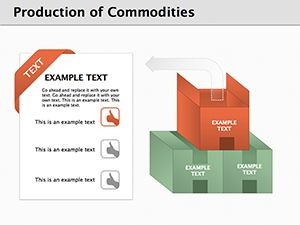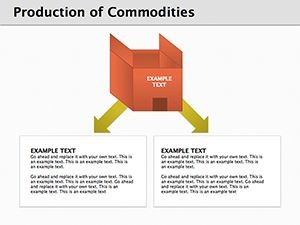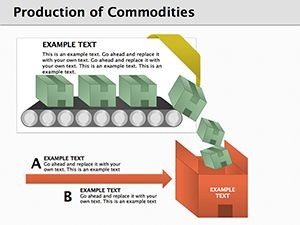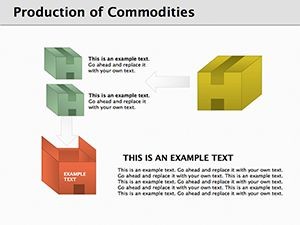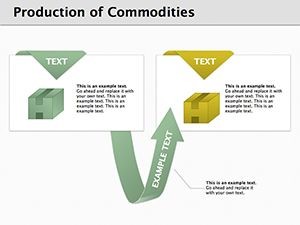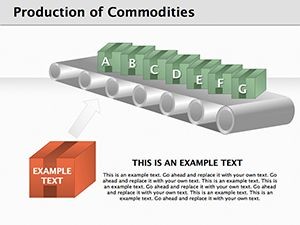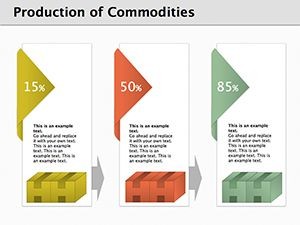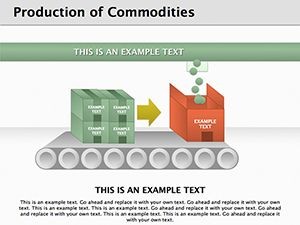Promo code "00LAYOUTS"
Production of Commodities Keynote Diagrams: 3D Insights into Manufacturing
In the intricate dance of modern manufacturing, where efficiency meets innovation, our Production of Commodities Keynote Diagrams template illuminates the path. With 16 editable 3D slides, it's crafted for engineers, supply chain managers, and economists to visualize commodity production from raw materials to market-ready goods. Imagine dissecting a car assembly line, layer by layer, to pinpoint bottlenecks - this template brings such clarity with depth-perceiving graphics. Aligned with industry standards from the American Society of Mechanical Engineers (ASME), it tackles common challenges like opaque processes by offering rotatable views and editable components. Suited for boardroom pitches on production scaling or academic lectures on economic theories, it draws from real cases like Toyota's lean manufacturing, as detailed in MIT Sloan Management Review. Transform abstract flows into tangible models, empowering your audience to grasp complexities and drive improvements.
Essential Features for In-Depth Analysis
The 3D modeling sets this apart, allowing pseudo-rotations for multi-angle views, unlike flat 2D alternatives. Keynote-optimized, it includes shadow effects for realism and color gradients representing process stages, ensuring compliance with visual ergonomics from ISO standards.
Diagram Types for Commodity Flows
- Assembly Line 3D: Stepwise builds for production sequences, like electronics manufacturing.
- Resource Flow Models: Track inputs to outputs, ideal for commodity chains in agriculture.
- Bottleneck Visualizers: Highlight constraints with pinch points in 3D pipes.
- Scalability Pyramids: Show growth from prototype to mass production.
- Efficiency Metrics Overlays: Integrate data like yield rates on 3D structures.
Backed by insights from operations research pioneers like Frederick Taylor.
Field-Specific Applications
A factory manager could model textile production, identifying waste reductions that cut costs by 15%, per IndustryWeek studies. Economists might illustrate commodity cycles in global trade presentations, enhancing policy discussions at forums like the World Economic Forum.
Step-by-Step Customization Process
- Select Base Model: Choose 3D structure for your commodity type.
- Input Stages: Label phases with real data.
- Apply Dimensions: Adjust scales for accuracy.
- Add Annotations: Include notes or arrows for clarity.
- Simulate Dynamics: Use builds to animate flows.
Streamlines from concept to final slide.
Advantages in Production Storytelling
Enhances comprehension of volumetric processes, superior to linear charts, with thematic elements like gear icons for machinery focus.
Master commodity production visuals - download and innovate today.
FAQ
How 3D enhances production diagrams?
Provides depth for better understanding of spatial flows.
Can I rotate views?
Simulated rotations via multiple angles included.
Compatible with data imports?
Yes, link to Excel for live updates.
What industries benefit most?
Manufacturing, agriculture, and economics primarily.
Support for large-scale presentations?
High-res for big screens, no quality loss.

